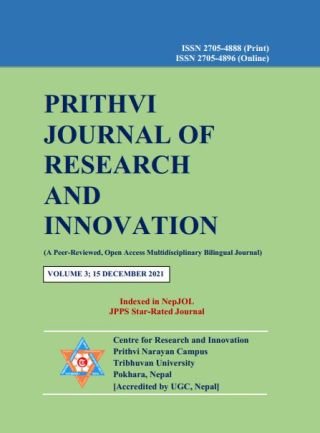Self-Medication Practices in Pokhara: A Study of Knowledge and Purpose among Non-Medical Students
DOI:
https://doi.org/10.3126/pjri.v3i1.41632Keywords:
Knowledge, practice, prescription, self-medication, non-medical studentsAbstract
This study has tried to assess the self-medication practice among non-medical students. For this purpose, data were collected from 206 Bachelor’s and Master’s level students by using self-administered questionnaire at Prithvi Narayan Campus, Pokhara. Quick relief from pain is one of the reasons for self-medication, followed by previous experiences of illness, pharmacist’s advice, ease and convenience and time saving. The majority of students has been practiced self-medication to treat headache (62.9%), fever (32.7%), gastric acidity (23.9%), cough (27.3%), common cold (34%), dental pain (18.5%) and dandruff (24.4%). Almost two fifth of the respondents (37.37%) had knowledge regarding the composition of drugs and minority (8.74%) that had knowledge about dose, content, therapy duration and reaction of the drug. In addition, the majority of the respondents practiced Antipyretic (38.6%) followed by analgesics (33.4%), general antibiotics (17.7%) and anti-ulcerants (14.1%) without proper consultation with professionals. The findings of the study showed that non-medical students had self-medication practices, depending on their age, gender and academic level. Due to a high level of practice on self-medication, the study recommended that the concerned authority should formulate a set of rules and implement to prevent such practices in the university, providing adequate facilities for healthcare medical treatment.
Downloads
Downloads
Published
How to Cite
Issue
Section
License
Copyright (c) 2021 Centre for Research and Innovation (CRI), Prithvi Narayan Campus (TU)

This work is licensed under a Creative Commons Attribution-NonCommercial 4.0 International License.
© Centre for Research and Innovation (CRI), Prithvi Narayan Campus (TU)

